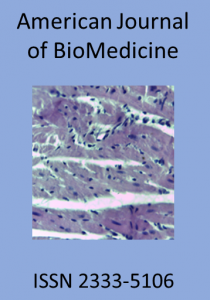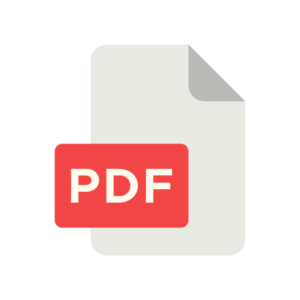Research Article
American Journal of BioMedicine
Volume 11, Issue 1, 21 January 2023, Pages 10-21 | http://dx.doi.org/10.18081/2333-5106/2023.11/10
Sambit Chandra, Sujeet D. Vijayakumar 1*
Received 15 September 2022 Revised 19 November 2022 Accepted 11 December 2022 Published 21 January 2023
Abstract
The main clinical characteristic features of polycystic ovarian syndrome (PCOS) includes menstrual dysfunction, anovulation and signs of hyperandrogenism. The exact pathophysiology of this condition is unclear, PCOS can result from abnormal function of the hypothalamic-pituitary-ovarian (HPO) axis. Standardization of surgical techniques is controversial and reproductive outcomes are comparable with laser and diathermy. The objective of this study is to evaluate factors which increase the chance of ovulation and pregnancy after laparoscopic ovarian electrocauterization (LEC) polycystic ovarian syndrome failure to the usual treatment. Seventy-five women with PCOS who were unresponsive to treatment were participated in this study. The pregnancy rate was determined over a period of one and half year of follow-up. The resulted data showed that pregnancy rate 18 months after LEC was 51.2%. Pregnant women following surgery had shorter duration of infertility. In conclusion, laparoscopic ovarian electrocauterization is efficacious and cost-effective alternative to other types of treatment and main factors that affect the outcome of surgery are duration of infertility, type of infertility and amount of pre-operational LH levels.
Keywords: PCOS; Electrocauterization; Pregnancy; Ovulation
Copyright © 2023 Sujeet Vijayakumar et al., et al. This article distributed under the Creative Commons Attribution License, which permits unrestricted use, distribution, and reproduction in any medium, provided the original work is properly cited.
Cited by CrossRef (1)
Cited by Scopus (1)
| 1. March WA, Moore VM, Willison KJ, Phillips DI, Norman RJ, Davies MJ. The prevalence of polycystic ovary syndrome in a community sample assessed under contrasting diagnostic criteria. Hum Reprod 2010;25:544-51. https://doi.org/10.1093/humrep/dep399 |
|||
| 2. Franks S, Mason HD, Polson DW, Winstpon RML, Margara R, Reed MJ. The mechanism and management of ovulatory failure in women with polycystic ovary syndrome. Hum Reprod 1988;3:431-434. https://doi.org/10.1093/oxfordjournals.humrep.a136739 |
|||
| 3. Api M, Görgen H, Cetin A. Laparoscopic ovarian drilling in polycystic ovary syndrome. Eur J Obstet Gynecol Reprod Biol 2005;119:76-81. https://doi.org/10.1016/j.ejogrb.2004.07.023 |
|||
| 4. Kaur M, Pranesh G, Mittal M, et al. Outcome of laparoscopic ovarian drilling in patients of clomiphene resistant polycystic ovary syndrome in a tertiary care center. Int J Infertil Fetal Med 2013; 4:39-44. https://doi.org/10.5005/jp-journals-10016-1059 |
|||
| 5. Alborzi S, Khodaee R, Parsanejad ME. Ovarian size and response to laparoscopic ovarian electro-cauterization in polycystic ovarian disease. Int J Gynaecol Obstet 2001;74:269-274. https://doi.org/10.1016/S0020-7292(01)00454-4 |
|||
| 6. Kriplani A, Manchanda R, Agarwal N, Nayar B. Laparoscopic ovarian drilling in clomiphene citrate-resistant women with polycystic ovary syndrome. J Am Assoc Gynecol Laparosc 2001; 8:511-8. https://doi.org/10.1016/S1074-3804(05)60613-5 |
|||
| 7. Stegmann BJ, Craig HR, Bay RC, Coonrod DV, Brady MJ, Garbaciak JA. Characteristics predictive of response to ovarian diathermy in women with polycystic ovarian syndrome. Am J Obstet Gynecol 2003;188:1171-3. https://doi.org/10.1067/mob.2003.289 |
|||
| 8. Kovacs GT, Clarke S, Burger HG, Healy DL, Vollenhoven B. Surgical or medical treatment of polycystic ovary syndrome: a cost-benefit analysis. Gynecol Endocrinol 2002;16:53-55. https://doi.org/10.1080/713602997 |
|||
| 9. Poujade O, Gervaise A, Faivre E, Deffieux X, Fernandez H. Surgical management of infertility due to polycystic ovarian syndrome after failure of medical management. Eur J Obstet Gynecol Reprod Biol 2011;158:242-7. https://doi.org/10.1016/j.ejogrb.2011.05.007 |
|||
| 10. Salah TM. Office microlaproscopic ovarian drilling (OMLOD) versus conventional laproscopic ovarian drilling (LOD) for women with polycystic ovary syndrome. Arch Gynecol Obstet 2013;287:361-7. https://doi.org/10.1007/s00404-012-2526-9 |
|||
| 11. Ott J, Mayerhofer K, Aust S, Nouri K, Huber JC, Kurz C. A modified technique of laparoscopic ovarian drilling for polycystic ovary syndrome using the monopolar hook electrode. Acta Obstet Gynecol Scand 2011;90:547-50. https://doi.org/10.1111/j.1600-0412.2011.01103.x |
|||
| 12. Amer SAK, Li TC, Cooke ID. A prospective dose-finding study of the amount of thermal energy required for laparoscopic ovarian. Hum Reprod 2003;18:1693-1698. https://doi.org/10.1093/humrep/deg307 |
|||
| 13. Zakherah MS, Kamal MM, Hamed HO. Laparoscopic ovarian drilling in polycystic ovary syndrome: Efficacy of adjusted thermal dose based on ovarian volume. Fertil Steril 2011;95:1115. https://doi.org/10.1016/j.fertnstert.2010.10.037 |
|||
| 14. Amer SA, Li TC, Metwally M, Emarh M, Ledger WL. Randomized controlled trial comparing laparoscopic ovarian diathermy with clomiphene citrate as a first-line method of ovulation induction in women with polycystic ovary syndrome. Hum Reprod 2009;24:219-25. https://doi.org/10.1093/humrep/den325 |
|||
| 15. Tulandi T, Saleh A, Morris D, Jacobs HS, Payne N, Tan SL. Effects of laparoscopic ovarian drilling on serum vascular endothelial growth factor and on insulin responses to the oral glucose tolerance test in women with polycystic ovary syndrome. Fertil Steril 2000;74:585-588. https://doi.org/10.1016/S0015-0282(00)00684-1 |
|||
| 16. Bayram N, van Wely M, Kaaijk EM, et al. Using an electrocautery strategy or recombinant FSH to induce ovulation in polycystic ovary syndrome: a randomised controlled trial. BMJ 2004;328:192-195. https://doi.org/10.1136/bmj.328.7433.192 |
|||
| 17. Wang R, Li W, Bordewijk EM, et al. Reproductive Medicine Network; International Ovulation Induction IPDMA Collaboration. First-line ovulation induction for polycystic ovary syndrome: An individual participant data meta-analysis. Hum. Reprod. Update 2019;25:717-732. https://doi.org/10.1093/humupd/dmz029 |
|||
| 18. Sheehan MT. Polycystic Ovarian syndrome: Diagnosis and management. Clin Med Res 2004;2(1):13-27. https://doi.org/10.3121/cmr.2.1.13 |
|||
| 19. Felemban A, Tan SL, Tulandi T. Laparoscopic treatment of polycystic ovaries with insulated needle cautery: A reappraisal. Fertil Steril 2000;73(2):266-9. https://doi.org/10.1016/S0015-0282(99)00534-8 |
|||
| 20. Ferraretti AP, Gianaroli L, Magli MC, Iammarrone E, Feliciani E, Fortini D. Transvaginal ovarian drilling: A new surgical treatment for improving the clinical outcome of assisted reproductive technologies in patients with polycystic ovary syndrome. Fertil Steril 2001;76(4):812-6. https://doi.org/10.1016/S0015-0282(01)02001-5 |
How to cite
Chandra S, Vijayakumar SD. Laparoscopic ovarian electrocauterization in polycystic ovarian syndrome: outcome and Influencing factors. American Journal of BioMedicine 2023; 11(1):10-21.
More Citation
Article Metrics
Rights and permissions
This work is licensed under a Creative Commons Attribution-NonCommercial 4.0 International License.
All articles published in American Journal of BioMedicine are licensed under Copyright Creative Commons Attribution-NonCommercial 4.0 International License.



